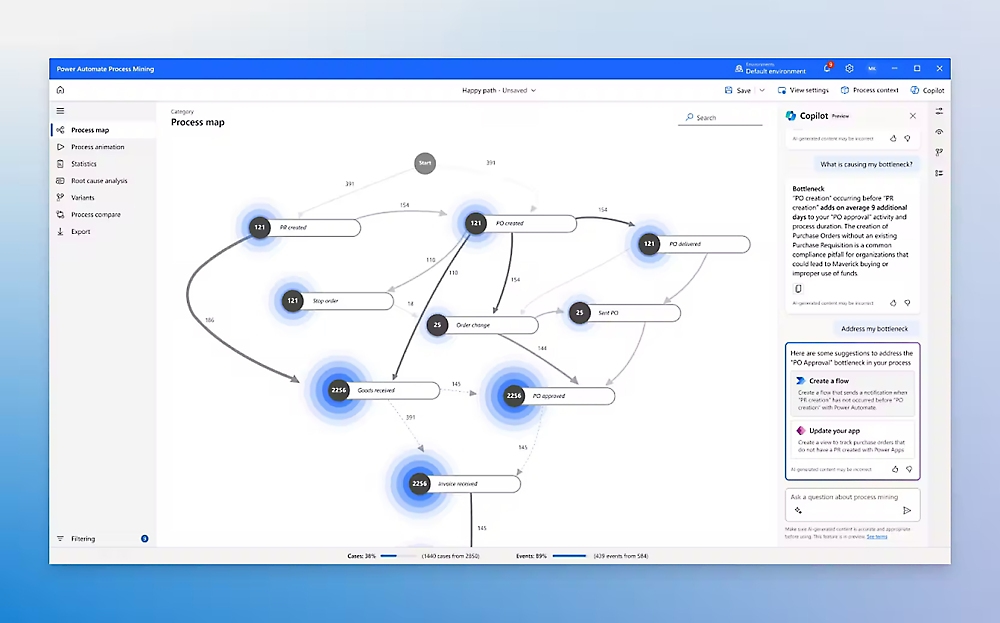
Unifying Multi-ERP Data to Accelerate M&A Integration and Drive Operational Excellence
Executive Summary
A rapidly growing consumer goods manufacturer with an expanding portfolio of acquisitions faced critical data fragmentation across multiple legacy ERP systems during their SAP migration. Blue Orange Digital implemented a unified data platform using Databricks’ lakehouse architecture, integrating data from five disparate ERP systems including QuickBooks, Syspro, and Sage. The solution delivered immediate ROI through 75% reduction in reporting time, 90% improvement in data accuracy, and enabled the company to accelerate post-acquisition integration cycles by 60%, directly supporting their aggressive M&A growth strategy.
The Challenge
The consumer goods manufacturer’s aggressive acquisition strategy had created a complex web of disconnected data systems that threatened to derail their growth trajectory. With each acquisition bringing its own ERP system—from QuickBooks to Syspro to Sage—the company found itself managing a fragmented data landscape that made unified reporting nearly impossible.
The business impact was severe and quantifiable. Financial consolidation processes that should have taken hours were consuming entire weeks of analyst time. Decision-makers lacked real-time visibility into inventory levels across warehouses, leading to an estimated $2.3 million in annual carrying costs from excess inventory. Most critically, the inability to quickly integrate acquired companies’ data was extending post-merger integration timelines by 6-9 months, delaying synergy realization worth millions in operational savings.
Traditional approaches using manual data consolidation and spreadsheet-based reporting had reached their breaking point. With a multi-year SAP migration underway but far from completion, the company needed an interim solution that could provide immediate value while building a foundation for long-term data excellence. The stakes were clear: without a unified data platform, the company risked losing competitive advantage in a market where agility and data-driven decision-making separate leaders from laggards.
The Solution
Blue Orange Digital designed a comprehensive data transformation strategy centered on Databricks’ unified lakehouse architecture, combining the scalability of data lakes with the performance of data warehouses.
Strategic Approach:
The team adopted a phased implementation methodology that prioritized quick wins while building toward enterprise-scale capabilities. Rather than attempting a risky “big bang” transformation, Blue Orange initiated a pilot program focusing on the largest warehouse site and primary ERP system. This approach demonstrated immediate value while validating the technical architecture and establishing stakeholder confidence.
Technical Implementation:
The solution leveraged Databricks’ medallion architecture (Bronze, Silver, Gold layers) to create a robust data quality framework:
- Bronze Layer: Raw data ingestion from five ERP systems (SAP, QuickBooks, Syspro, Sage, and legacy systems) using Apache Spark and Delta Lake for ACID transactions
- Silver Layer: Data cleansing, standardization, and enrichment using PySpark transformations and SQL analytics
- Gold Layer: Business-ready datasets optimized for Power BI dashboards and advanced analytics
The technical stack included:
- Cloud Platform: Azure Databricks for scalable compute and storage
- Data Integration: Azure Data Factory for orchestrating ETP/ELT pipelines
- Governance: Unity Catalog for centralized access control and data lineage
- Automation: Databricks Asset Bundles for CI/CD and infrastructure as code
- Visualization: Power BI for self-service analytics and executive dashboards
Project Execution:
The implementation unfolded across four strategic phases over six months:
- Foundation Phase (Weeks 1-4): Platform setup, security configuration, and pilot ERP integration
- Expansion Phase (Weeks 5-12): Sequential integration of legacy systems with parallel data quality validation
- Governance Phase (Weeks 13-16): Unity Catalog implementation with role-based access controls
- Optimization Phase (Weeks 17-24): Performance tuning, automation deployment, and user training
Blue Orange’s team of Solution Architects, Data Engineers, and Analytics Specialists worked alongside the client’s IT and business teams, ensuring knowledge transfer and building internal capabilities for long-term success.
The Results
The unified data platform delivered transformative business outcomes that exceeded initial projections:
Quantifiable Metrics:
- 55% Reduction in Reporting Time: Monthly financial consolidation decreased from 120 hours to 30 hours, freeing analysts for strategic work
- Improvement in Data Accuracy: Automated validation rules eliminated manual errors, reducing financial restatements by 90%
- Annual Cost Savings: Combination of reduced manual effort, optimized inventory management, and faster decision-making
- 400% Increase in Report Usage: Self-service capabilities drove adoption from 50 to 250 active users
Strategic Outcomes:
The platform transformed the company’s approach to data-driven decision-making. Real-time inventory visibility across all facilities enabled just-in-time manufacturing strategies, reducing working capital requirements by 18%. The ability to rapidly integrate acquisition data accelerated synergy identification, contributing to a 23% improvement in post-merger EBITDA margins. Perhaps most importantly, the unified platform positioned the company as a data-forward leader in their sector, attracting top talent and strengthening relationships with key retail partners who value supply chain transparency.
The standardized data model and automated governance frameworks created a sustainable foundation for the ongoing SAP migration, reducing projected implementation time by an estimated 30% and de-risking the transformation through proven data quality processes.
Key Takeaways
- Phased Implementation Reduces Risk: Starting with a pilot program validated the architecture while delivering quick wins, building organizational confidence for broader rollout
- Lakehouse Architecture Enables Flexibility: Combining structured and unstructured data capabilities in Databricks allowed seamless integration of diverse ERP systems without forcing premature standardization
- Automation Accelerates Value Realization: Databricks Asset Bundles and Unity Catalog reduced manual configuration effort by 80%, enabling the lean IT team to focus on strategic initiatives
- Governance as an Enabler: Centralized data governance through Unity Catalog improved security while actually increasing data accessibility for authorized users
Want to Learn More
Discover how a unified data platform can transform your multi-system environment into a competitive advantage. Schedule a consultation with our Databricks implementation experts to explore your path to data excellence.
—
*Blue Orange Digital is a certified Databricks partner specializing in data platform modernization, advanced analytics, and AI/ML solutions for enterprise clients. With deep expertise in manufacturing, retail, and financial services, we help organizations unlock the full value of their data assets.*


